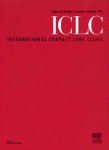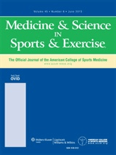
Skeletal Muscle
Scope & Guideline
Connecting scholars and practitioners in the study of skeletal muscle.
Introduction
Aims and Scopes
- Muscle Biology and Physiology:
Research on the cellular and molecular mechanisms underlying muscle formation, maintenance, and function, including studies on myogenesis, muscle fiber types, and the role of various signaling pathways. - Muscle Pathology and Disease Mechanisms:
Exploration of the cellular and genetic factors contributing to muscle diseases such as muscular dystrophies, sarcopenia, and cachexia, with a focus on understanding the mechanisms of muscle degeneration and regeneration. - Therapeutic Strategies in Muscle Disorders:
Investigations into novel therapeutic approaches, including gene therapy, pharmacological interventions, and regenerative medicine techniques aimed at treating muscle-related conditions. - Muscle Regeneration and Repair:
Studies on the processes of muscle regeneration following injury or atrophy, including the roles of satellite cells, growth factors, and extracellular matrix components. - Impact of Aging and Metabolism on Muscle Health:
Research examining the effects of aging, metabolic disorders, and lifestyle factors (such as exercise) on skeletal muscle function and health.
Trending and Emerging
- Gene Therapy and Genetic Interventions:
There is a notable increase in research focused on gene therapy techniques, such as AAV gene delivery systems, targeting genetic muscle diseases, and exploring their therapeutic potential. - Muscle Aging and Sarcopenia:
Studies on the mechanisms of muscle aging and sarcopenia are gaining traction, highlighting the importance of understanding age-related muscle loss and its implications for health in older populations. - Multi-Omics Approaches:
The adoption of multi-omics methodologies to investigate muscle biology and disease is on the rise, providing comprehensive insights into the complex interactions of genes, proteins, and metabolites in muscle health. - Impact of the Microenvironment on Muscle Regeneration:
Emerging research is focusing on the role of the muscle microenvironment, including cellular interactions and extracellular matrix components, in influencing muscle regeneration and repair processes. - Inflammation and Immune Response in Muscle Disease:
There is an increasing emphasis on the role of inflammation and immune responses in muscle degeneration and regeneration, particularly in the context of chronic diseases and aging.
Declining or Waning
- General Muscle Physiology without Disease Context:
There seems to be a decline in studies focusing solely on basic muscle physiology without a clear link to disease mechanisms or therapeutic implications, suggesting a shift towards more clinically relevant research. - Non-Specific Animal Model Studies:
Research utilizing generic animal models without a specific disease context has decreased, indicating a trend towards more targeted studies that address particular muscle disorders or conditions. - Historical Reviews and Case Reports:
The frequency of publications centered on historical reviews or isolated case reports appears to be waning, as the journal increasingly favors original research that contributes novel insights into muscle biology and disease.
Similar Journals

JOURNAL OF VASCULAR RESEARCH
Pioneering insights in cardiology and physiology.Welcome to the JOURNAL OF VASCULAR RESEARCH, a reputable academic journal published by KARGER that has been a cornerstone of vascular research since 1964. With an ISSN of 1018-1172 and an E-ISSN of 1423-0135, this journal plays a vital role in disseminating cutting-edge research in the fields of Cardiology and Cardiovascular Medicine and Physiology. Currently categorized in the Q3 quartile for both disciplines, it ranks as #179 in Cardiology and #131 in Physiology according to Scopus, showcasing its significant contribution to the scientific community. Although the journal operates on a subscription basis, it strives to provide accessible content that informs and inspires researchers, professionals, and students alike. As the journal looks forward to its convergence in 2024, it continues to uphold its mission of advancing knowledge, fostering innovation, and encouraging collaboration within the dynamic realm of vascular research.

MAGNESIUM RESEARCH
Deepening Understanding of Magnesium's Biochemical SignificanceMAGNESIUM RESEARCH, published by John Libbey Eurotext Ltd, is a leading journal in the fields of biochemistry, clinical biochemistry, and molecular biology, dedicated to advancing the understanding of magnesium's role in biological systems. With an ISSN of 0953-1424 and an E-ISSN of 1952-4021, this journal has been a vital resource for researchers and professionals since its inception in 1988, now converging into its 2024 issues. Positioned in the Q4 category for 2023 across several biochemistry domains, the journal is indexed in Scopus, providing a significant platform for the dissemination of research findings. Despite its current rankings reflecting a need for further impact, the journal serves as an important venue for emerging research that explores the biochemical and metabolic functions of magnesium, underlining its crucial influence on health and disease. Although primarily published using traditional access models, the content remains relevant for those seeking to deepen their knowledge in this essential mineral’s biological importance. Researchers, students, and professionals in related fields will find MAGNESIUM RESEARCH an invaluable addition to their academic resources.

AMERICAN JOURNAL OF PHYSIOLOGY-ENDOCRINOLOGY AND METABOLISM
Unveiling the complexities of hormonal and metabolic processes.American Journal of Physiology-Endocrinology and Metabolism, published by the American Physiological Society, stands as a leading platform for disseminating high-quality research in the fields of endocrinology, diabetes, and metabolism, as well as general physiology. With an impressive impact factor placing it within the Q1 category across multiple relevant disciplines (Endocrinology, Diabetes and Metabolism; Physiology; and Medical Physiology), this journal reflects its authoritative position in the scientific community. Spanning from 1980 to 2024, the journal consistently publishes groundbreaking studies and significant findings that advance our understanding of hormonal regulation and metabolic processes. Although it does not currently offer open access, it provides valuable resources for researchers, professionals, and students alike, eager to stay at the forefront of advancements in physiological sciences. Addressed in Rockville, Maryland, its commitment to excellence and rigorous peer review ensures that every article contributes essential insights to the field.

Journal of Cachexia Sarcopenia and Muscle
Uncovering the complexities of cachexia and sarcopenia.The Journal of Cachexia Sarcopenia and Muscle is a premier open-access publication dedicated to advancing the understanding of muscle wasting, cachexia, and related disorders. Published by Wiley, this esteemed journal boasts an impressive impact within its fields, achieving a Q1 classification in both Orthopedics and Sports Medicine, and Physiology (Medical) for 2023. With a Scopus ranking of #4 out of 321 in Orthopedics and Sports Medicine, and #10 out of 113 in Physiology, it firmly positions itself at the forefront of medical research. The journal’s scope includes comprehensive studies, reviews, and innovative clinical trials that contribute to the scientific community’s understanding of muscle health and performance. Since its inception in 2010 as an open-access platform, the Journal of Cachexia Sarcopenia and Muscle has facilitated a growing dialogue among researchers, healthcare professionals, and students, emphasizing its crucial role in tackling the multifaceted challenges posed by muscle diseases. For those invested in the latest research trends and clinical advancements, this journal stands out as a vital resource and reference point.

Current Opinion in Physiology
Illuminating Emerging Trends in Physiological ScienceCurrent Opinion in Physiology, published by Elsevier, is a leading journal dedicated to the dynamic field of physiology. With an E-ISSN of 2468-8673, this journal provides a platform for the latest insights and perspectives, reflecting the evolving landscape of physiological research. Operating from the United Kingdom, the journal holds a respectable impact factor and is ranked Q2 in both general physiology and medical physiology categories, highlighting its prominence among the global academic community. With Scopus rankings placing it in the 64th and 60th percentiles within its respective categories, Current Opinion in Physiology serves as an essential resource for researchers, professionals, and students eager to stay informed about innovative theories and emerging trends in physiology. The publication emphasizes high-quality reviews that summarize current knowledge and future directions, ensuring readers gain valuable insights applicable in both clinical and research settings.

JOURNAL OF PHYSIOLOGY AND BIOCHEMISTRY
Catalyzing Knowledge Exchange in Biomedical SciencesJOURNAL OF PHYSIOLOGY AND BIOCHEMISTRY, published by Springer in the Netherlands, serves as a pivotal platform for disseminating high-quality research within the fields of physiology, biochemistry, and related biomedical sciences. With an impressive impact factor reflected in its categorization as Q2 in Biochemistry and Q1 in Medicine (miscellaneous), this journal fosters a vibrant community of scholars dedicated to advancing knowledge and innovation. The journal’s broad scope encompasses a wide range of topics from cellular mechanisms to systemic physiology, making it relevant for both theoretical and applied sciences. Researchers and practitioners are encouraged to utilize the available Open Access options to reach a wider audience. The journal’s continuous contribution to the scientific dialogue since its inception in 1996 positions it as a key resource for professionals and students alike, facilitating the exploration of cutting-edge topics and collaborative research opportunities.

Biomedical Human Kinetics
Innovating Physical Therapies for Enhanced HealthBiomedical Human Kinetics, an esteemed academic journal published by SCIENDO, focuses on the intricate intersections of human movement, rehabilitation, and the study of physical therapies. Since its transition to an open access model in 2009, this journal has become a vital platform for sharing groundbreaking research and innovative methodologies in the fields of Orthopedics, Sports Medicine, and Physical Therapy. With an ISSN of 0043-9630 and an E-ISSN of 2080-2234, it operates out of Poland, providing global access to high-quality research. The journal’s standing in 2023 is notable, ranking in the Q3 category for both Orthopedics and Sports Medicine and Physical Therapy, Sports Therapy, and Rehabilitation, reflecting its commitment to fostering academic discourse within these important and evolving domains. Furthermore, with Scopus rankings placing it in the 36th percentile in its categories, Biomedical Human Kinetics is recognized for its contributions to the academic community. As it converges research efforts from 2016 to 2024, this journal serves as a cornerstone for researchers, professionals, and students dedicated to enhancing human health and performance through informed scientific exploration.

Journal of Applied Physiology
Unveiling the Complexities of Human Physiology.The Journal of Applied Physiology, established in 1948 and published by the American Physiological Society, stands as a cornerstone in the field of physiology and applied health sciences. With an impact factor reflecting its rigorous scholarly contributions, this peer-reviewed journal ranks in the Q1 category for both Medicine (miscellaneous) and Physiology as of 2023, further emphasizing its prestige and relevance. Researchers and practitioners are drawn to its comprehensive scope, which includes physiological and biomechanical responses relevant to health, exercise, and clinical practices, making it an essential resource for advancements in sports science and medical physiology. Though it does not offer Open Access, the journal provides a wealth of high-quality research, with contributions that are crucial for understanding the complexities of human physiology. Its inclusion in Scopus ranks demonstrates a solid commitment to advancing knowledge in the field, appealing to a diverse audience of researchers, professionals, and students committed to exploring the intricate interactions between physiological processes and applied health.

MEDICINE & SCIENCE IN SPORTS & EXERCISE
Advancing the frontiers of sports medicine and exercise science.MEDICINE & SCIENCE IN SPORTS & EXERCISE is a premier journal published by Lippincott Williams & Wilkins, dedicated to advancing the fields of sports medicine, exercise physiology, orthopedics, and physical therapy. With a significant history dating back to 1969, this journal provides a critical platform for disseminating cutting-edge research and clinical insights that shape contemporary sports science. Recognized for its rigorous peer-review standards, it boasts an impressive impact factor and ranks in the top quartile (Q1) across pivotal categories including Orthopedics and Sports Medicine, Physical Therapy, and Rehabilitation. Researchers and healthcare professionals will find it an invaluable resource for the latest findings and trends that inform practice and enhance athletic performance. The journal is available in both print and digital formats, ensuring accessibility for its audience worldwide. By fostering a rich dialogue among scientists, practitioners, and students, MEDICINE & SCIENCE IN SPORTS & EXERCISE solidifies its importance in the evolving landscape of sports health and exercise research.

SCANDINAVIAN JOURNAL OF MEDICINE & SCIENCE IN SPORTS
Leading the Way in Sports Medicine Excellence.SCANDINAVIAN JOURNAL OF MEDICINE & SCIENCE IN SPORTS, published by Wiley, stands at the forefront of research in the fields of orthopedics, sports medicine, and physical therapy. Established in 1991, this prestigious journal has built a strong reputation, reflected in its Q1 ranking across multiple categories including Orthopedics and Sports Medicine, and Physical Therapy and Rehabilitation, as of 2023. With a discerning focus on innovative research and practical applications, the journal publishes high-quality studies that advance the understanding of sports performance and rehabilitation strategies. Although it does not offer open access, it remains accessible through various institutional subscriptions, ensuring that both practitioners and academics can benefit from its findings. The journal's commitment to excellence is further evidenced by its impressive Scopus rankings, placing it in the top 94th percentile within its respective fields. As the athletic landscape continues to evolve, SCANDINAVIAN JOURNAL OF MEDICINE & SCIENCE IN SPORTS serves as an essential resource for researchers, clinicians, and students dedicated to improving health outcomes in sports and exercise.